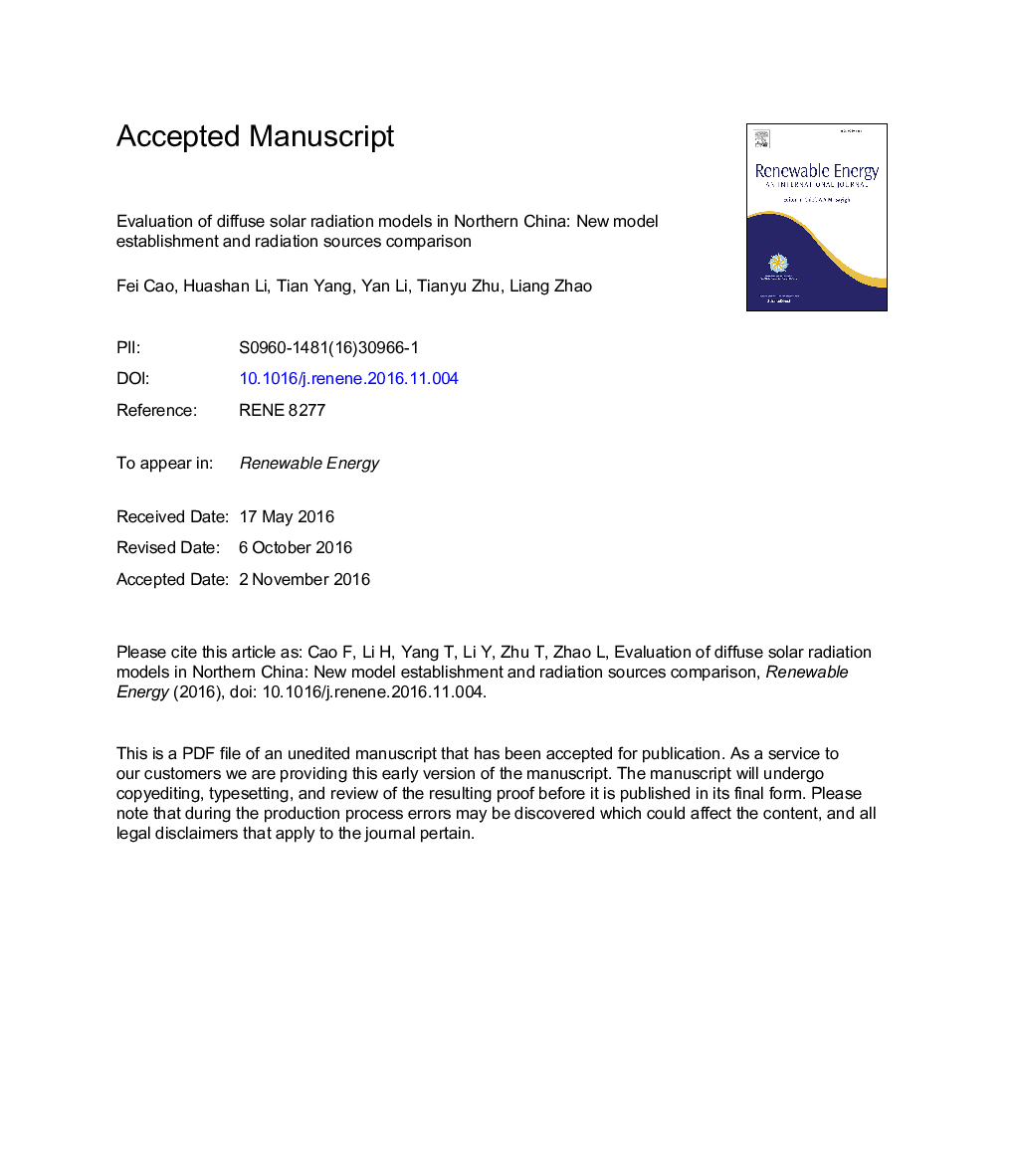| Article ID | Journal | Published Year | Pages | File Type |
|---|---|---|---|---|
| 4926612 | Renewable Energy | 2017 | 38 Pages |
Abstract
Conventional methods to obtain solar radiation data are from weather stations, from solar radiation models, from commercial software databases and from field measurements. Few studies have been presented to compare the results from the four mentioned methods. Considering this, new daily diffuse solar radiation models for Northern China climates are first established in this study. The solar radiation models are then compared with open-access weather station data from China Meteorological Data Sharing System (CMDSS), with TRNSYS database data and with measured data in Xi'an. TRNSYS supplies the Typical Meteorological Year data, while the solar radiation models give the long-term annual average results. It is found that combining the sunshine duration and the day of the year together can establish a group of accurate diffuse solar radiation models. Good agreements are found between the CMDSS and the newly established solar radiation model calculating daily diffuse solar radiation. The diffuse solar radiation estimated by TRNSYS is a bit higher than that from the open-access website in summer half year. TRNSYS supplies the highest annual diffuse solar radiation. The TRNSYS database is of high significance to a solar system performance evaluation. The solar radiation models can be used for the solar system design.
Related Topics
Physical Sciences and Engineering
Energy
Renewable Energy, Sustainability and the Environment
Authors
Fei Cao, Huashan Li, Tian Yang, Yan Li, Tianyu Zhu, Liang Zhao,
